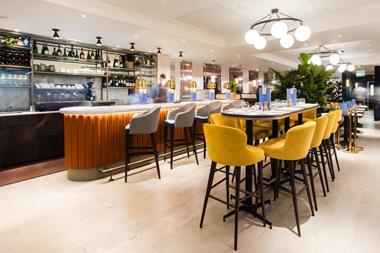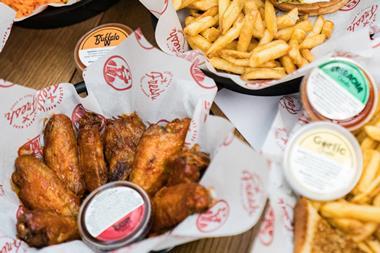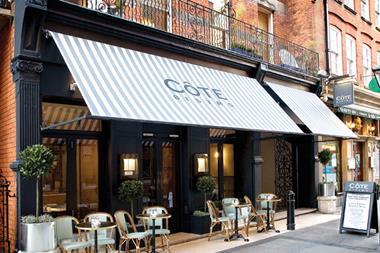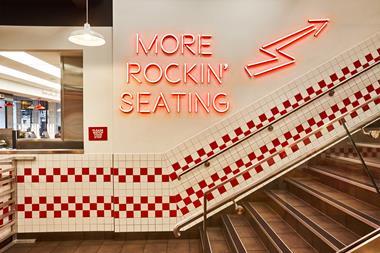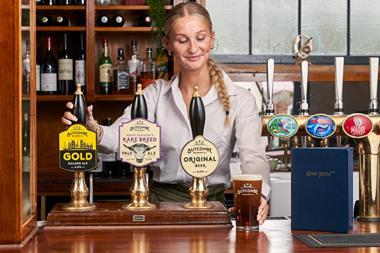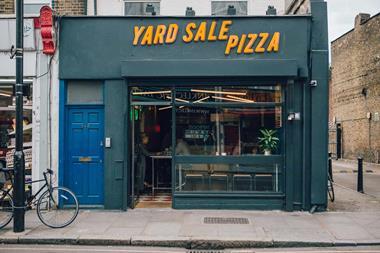As someone who lives at the coalface of transactional activity in the restaurant sector, MCA asks Olswang’s David Roberts for his insights on the sector at this time
Valuations
I think that CBPE’s secondary sale of the Côte business will probably represent the high water mark for valuations in the casual-dining space for the time being. There is evidence to suggest that marketing a business at 10x run rate EBITDA is no longer realistic, despite what our friends in the corporate finance industry might say. In my view, marketing a business 10x in this environment can only be done with a straight face if you are marketing to an ill-informed sovereign wealth fund or a high net-worth individual looking for a trophy – neither of whom generally turn out to be quality purchasers.
Private equity (PE)
While the UK private equity industry has embraced our sector and been responsible for immense growth and some spectacular sales, there are now two types of private equity owners. Those that hold assets and those who want to own assets. I can see a valuation gap developing between these two classes and I get the sense that PE purchasers are now much more concerned about industry-wide risk factors including minimum wage, living wage, rise in business rates, central London rent reviews, ridiculous premia on lease transfers and the looming Brexit vote. I predict PE owners will have to hold their assets a little longer and thus think that only the star performers will get their deals away before Q4 this year.
Alternative finance for growth
If the PE industry does cool, I predict high street and asset finance lenders will step into the gap. We have seen groups like Honest Burger shun early-stage PE funding to take on hybrid debt products to delay the onset of inevitable equity dilution that a PE investment brings about.
Crowdfunding
For the short term, I continue to see a role for crowdfunding but suspect that, unless regulated further, it will either fizzle out or go out with an almighty bang. I fear that, given the valuations that leisure concepts have been achieving as part of their crowdfunding exercises, such businesses will reach a point where they price themselves out of traditional funding routes and continue to rely on crowdfunding without deep enough pools of capital to fund it. In other words, they will reach a dead end. Thus, owners beware, it is going to prove difficult to wean a business off crowdfunding.
Menu disclosure
Just as the sugar tax lobby group has achieved much publicity in its war on sugar, our industry is starting to embrace the disclosure of calorific information on menus. I can see the millennial generation demanding this more. I see sugar, nuts, gluten and salt disclosure also as points of differentiation that restaurant offerings can exploit and for those less health-conscious concepts to begin to grapple with.
Service charge
I don’t have a single restaurant client that was not hugely concerned about their approach to service charges last year when it careered into the mainstream press. While legally funds of the house, in a consumer-facing business, customers vote with their feet and if the consumer thinks or is led to believe they are paying for “service”, however wrong that might be, those groups that continue to retain some or all of those funds do so at their (social media) peril.
The listed environment
The sector remains under-represented in the listed environment and I know there are several institutional investors that would queue up to back some more restaurant talent on the market. On the back of successes like PatVal and given the acknowledged valuation gap between private equity and the public markets, I suspect we will see more restaurant businesses or even blind pool funds looking to invest in restaurant businesses coming to market.
Restaurants and hotels together
I am now starting to see hotel clients talking to restaurant clients to see if they can bring their F&B ‘A game’ to help drive the bottom line in hotel businesses. We acknowledge combinations such as Soho House and Hoxton Hotels, D&D and South Place hotel are working well and other hotel operators are looking at their ground and basement white elephant space and are starting to see revenue opportunities to bring in some more hospitality razzle dazzle. Queue Carluccio’s for instance. We are thus starting to develop documentation for a lease of space at a hotel plus a catering agreement so that a restaurant tenant not only operates their concept on-site, but builds a specific, separate kitchen to deal with breakfast and banqueting of the hotel landlord. I can see more of this happening in due course.
Use of M&A as a sword
With the various tax costs associated with transfers of leases and the huge premia being paid for such, we are beginning to see restaurant groups use corporate acquisitions as a route to growth rather than the slow, expensive and cumbersome new lease/lease assignment route. Acquiring the corporate owner of a lease or a group of companies with multiple leases saves on stamp duty and can generate superior and unexpected capital returns for the owner and we are seeing concepts use this structure to encourage owners of existing sites to sell.
Challenges for grab and go
While I see growth in the grab-and-go market, I am concerned there is an inherent ‘sameness’ to many concepts (including the salad and healthy eating-led concepts). I am also concerned by the proliferation of the supermarket stores on the high street, which are not only prolific but are able to offer sandwiches, salads, fruit, drinks, coffee and sushi as a one-stop shop and are, perhaps, the biggest threat to these concepts. It may be Waitrose, therefore, that drives consolidation in this section of our market.
More US concepts to come
I am seeing more successful US concepts looking to bring their offering to the UK, some at the premium end and others as a rollout. Watch this space.
Bloggers are more important
The power of social media in general and food bloggers in particular should not be underestimated and we are starting to see bloggers morph into reality. A perfect example is healthy food blogger Deliciously Ella who has used her online fame to develop a successful cookbook range and to open a café concept (the Mae Deli) with her partner Matt Wills so that the public can not only devour her recipes online, but may now taste the food in the real world. This is a hugely exciting development and an great example of on-line to bricks and mortar convergence.
■ David Roberts is a corporate specialist on public and private finance in the leisure sector at international law firm Olswang

























